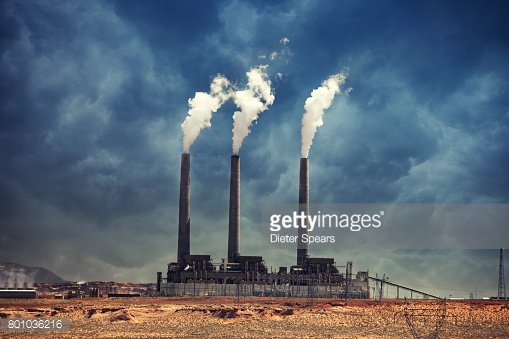In 2006, California’s Air Resources Board released a comprehensive plan to reduce greenhouse gases that cause climate change. It included the landmark cap-and-trade program, which was implemented in January 2012. Cap-and-trade is a market-based strategy that limits carbon emissions from industry sources by lowering the “cap” for these pollutants annually. If a company exceeds their cap, it has three options: reduce emissions at the source, buy another company’s leftover space, or compensate for exceeding the cap by reducing emissions elsewhere. Although cap-and-trade has obvious environmental benefits, it disproportionately impacts underprivileged communities and is an environmental justice issue.
When a company buys another’s leftover space or compensates for exceeding the carbon cap by reducing emissions elsewhere, it ignores the disproportionate impact of its pollutants on the communities living nearby. On average, communities sited next to factories are of lower socioeconomic status and have higher proportions of minority groups and people of color. Such residents cannot afford to move away from polluting facilities, seek adequate health care for adverse health effects, or pursue legal avenues to limit exposure.
Image Source: Ron Rothbart
Cap-and-trade focuses on limiting carbon emissions, but also limits gasoline, diesel, and particulate matter. Research has shown that increased exposure to particulate matter leads to adverse birth outcomes, such as low birth weight and preterm births. Similarly, increased prenatal levels of polycyclic aromatic hydrocarbons, which are formed by the incomplete combustion of carbon materials like diesel and gasoline, have been linked to obesity. When a company offsets its increased pollutant levels by purchasing extra space or offsetting elsewhere, it puts nearby communities at risk for negative health effects.
In response, Senate Bill 535 requires that a fourth of the revenue from the cap-and-trade program be spent on projects benefiting disadvantaged communities, which are identified through Cal EnviroScreen. However, this measure does not actually limit pollutant exposure at its source.
An alternative to cap-and-trade is the carbon tax, a fee levied on fuel based on how much carbon its combustion emits. Unlike cap-and-trade, which places the fee directly on the industry, the carbon tax places the fee on both the industry and the consumer, or wherever the fuel is being produced, distributed, or used. Additionally, industries are not allowed to buy leftover space or offset higher pollutant levels by reducing elsewhere, eliminating many of the concerns of environmental justice advocates. Despite this benefit, the carbon tax is controversial because of its direct fee on consumers. In fact, California recently renewed its cap-and-trade program until 2030. It remains doubtful whether the carbon tax will ever be successful in even the country’s most climate change-progressive state.
Featured Image Credit: Ron Rothbart










